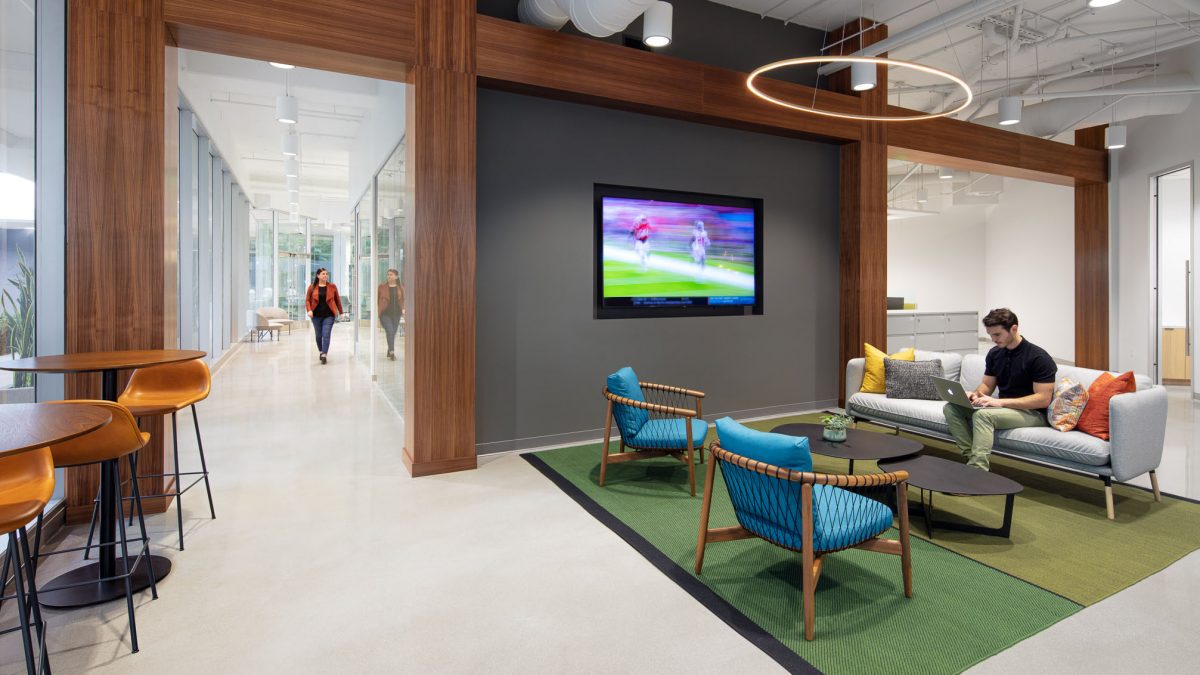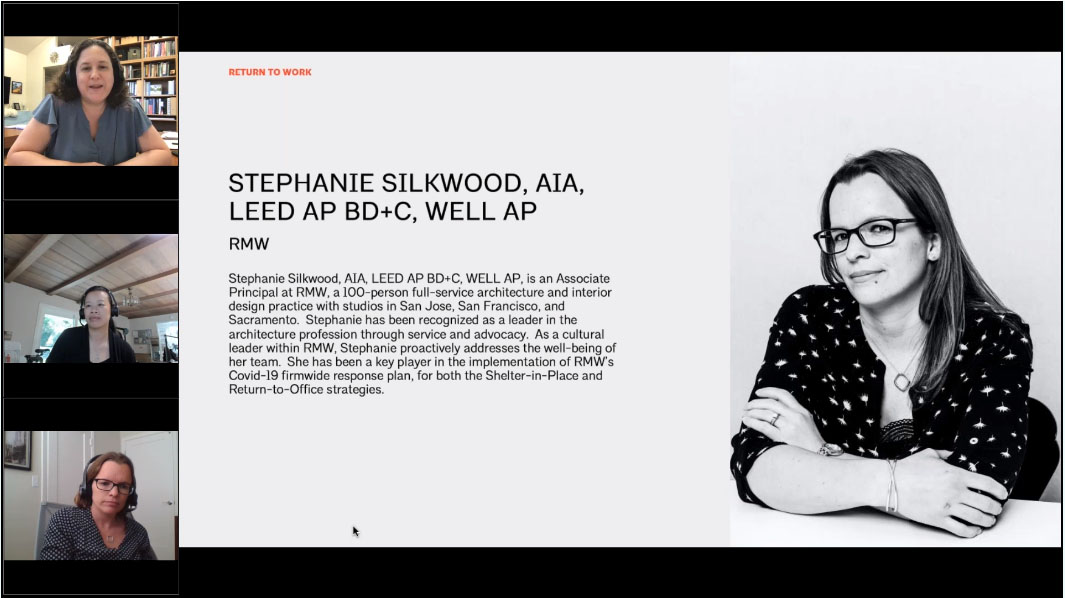Stories

We find ourselves today in the midst of a wholly unexpected diversion from normal, one whose arrival was all too swift. One day, we were busy meeting the ever-increasing demand for creative, open office environments, the next day every office building stood abandoned. In that first week of shelter-in-place, as we grappled with the pros and cons of working from home, it became evident that a new world was settling upon us. New solutions would be required, and to find them, a different set of questions needed to be asked. In the weeks since, RMW has promoted discussions both internally and externally to help us better navigate the complexities of our post-pandemic reality.
The first action we took was to form a COVID-19 task force. Launched in early April, the task force meets weekly to share the different concerns brought by our clients, compare the costs and benefits of various solutions, exchange ideas and identify resources so that we are poised to offer impactful solutions quickly. At RMW, engaging in dialogue with our clients about their specific needs has always been at the heart of our approach and is only more relevant now since every client will require a unique response. Though our efforts heretofore were uncomplicated by threats from a viral invasion, each project presented its own unique set of challenges that required the innovative application of our team’s knowledge. Despite the unprecedented nature of this moment, our client-centric approach has prepared us to rise to the challenge of designing for the post-pandemic workplace.
As time marched on under stay-at-home orders, and more people realized that returning to the office would require implementing real changes, we felt that it was important to engage with the broader community of professionals in our industry, as well as hear directly from our clients on the issues they thought to be most pressing.
.In June, RMW participated in three virtual panel discussions that addressed the post-COVID workplace. The first was called “Safe Office Environments: What’s Next” and was hosted by ACRE Sacramento. It brought together industry experts from commercial real estate, workplace design, office furniture and environmental remediation for a discussion on safely re-entering the workplace
The second discussion, “Global Focus Local Approach,” was co-hosted by RMW and OneWorkplace. This conversation offered insights from two of our biggest clients on the importance of designing scalable post-COVID strategies tailored to brand, policy, and people.
The third return-to-work discussion was amongst design professionals from various firms and was hosted by the Silicon Valley chapter of the AIA.

.
Common Approaches and Findings
Several commonalities emerged from these discussions. First and foremost is that showing concern for the safety of employees as they return to work is paramount. Visible measures, clear guidelines, and open communication, along with the provision of PPE, are part of a successful re-entry program, as is making the return to work voluntary until there is a vaccine available.
Second, there is no one-size-fits-all solution. Understanding the unique circumstances facing each company, its workforce, and how conditions might differ depending on location is critical to crafting the right response and knowing when to re-open the office. The best way to gain these insights is by conducting a pre-return survey to assess employee comfort and concerns. Evaluating existing conditions in the office will also help identify which measures need to be implemented to safeguard your employees. These are among the services identified by our COVID-19 task force to help our clients navigate the re-entry process.
Third, everyone feels that while working from home has been largely met with success, the merits of working together in the office remain vital for collaboration, mentorship, camaraderie, well-being, and belonging. These are the elements that help define company culture, which is why the workplace will remain important. In addition, the issue of equity must be addressed for those employees whose home environments or family circumstances are not conducive to telecommuting. While some companies may choose to capitalize on the success of working remotely in the near term, a return to the workplace is as inevitable as it is necessary.
In the post-pandemic world, our commitment to supporting our clients remains unchanged. As designers of the built environment, the opportunity to apply our knowledge in creative but sensible ways to solve the challenges that we all now face is exciting to us. Hopefully, what we do and what we have learned along the way can help make the re-entry process easier for you and your employees or tenants. We are in this together, and together we will persevere.
Contributors
Denise M. Darrin Mark Alvarez Sierra Scott Stephanie Silkwood Terry Kwik